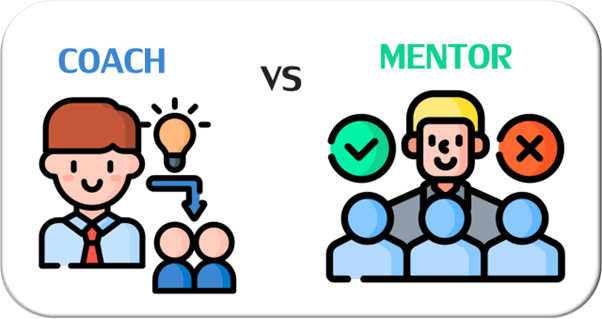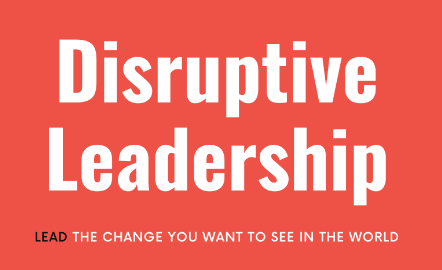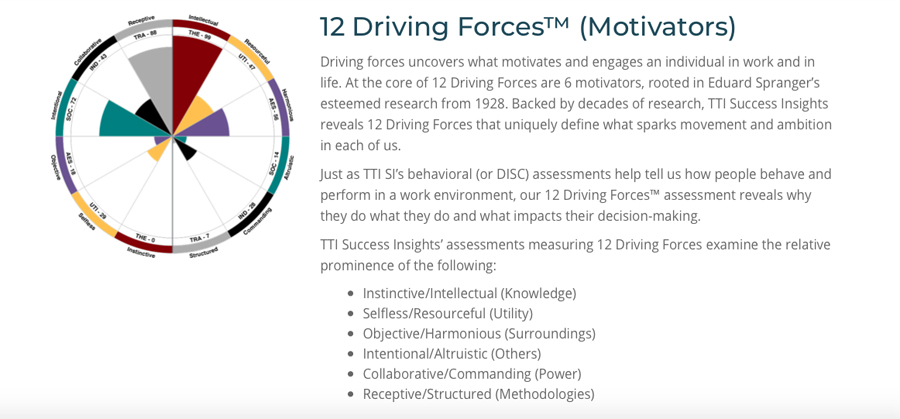Leadership development is critical for businesses aiming to stay competitive. Two popular approaches to cultivating effective leaders are KONA’s leadership mentoring and leadership coaching. Though these terms are often used interchangeably, they serve different purposes and can have distinct impacts on leadership growth. Understanding their differences can help businesses choose the right approach for their leaders.

Defining Leadership Mentoring and Leadership Coaching
Before diving into the differences, let’s define what each term means:
KONA Leadership Mentoring
Mentoring is a long-term relationship where a more experienced leader (the mentor) provides guidance, support, and advice to a less experienced leader (the mentee). The focus is on the mentee’s personal and professional growth, leveraging the mentor’s experience to navigate challenges, build confidence, and develop the skills necessary for long-term success.
KONA Leadership Coaching
Coaching is a structured, short-term, goal-oriented process led by a professional coach or skilled leader. It focuses on specific skills, behaviours, or objectives the leader wants to achieve. Coaches use powerful questioning techniques, feedback, and accountability to help leaders unlock their potential, overcome obstacles, and achieve specific goals.

Key Differences Between Leadership Mentoring and Coaching
1. Focus of the Relationship
Mentoring: The focus is on the mentee’s overall development, including career trajectory, work-life balance, and personal growth. It’s about sharing wisdom, offering career advice, and guiding the mentee to make informed decisions over time.
Coaching: The focus is on performance improvement and achieving specific, measurable goals. Coaching is more directive, with a clear structure aimed at enhancing the leader’s competencies, solving problems, or improving certain behaviours.
2. Nature of the Relationship
Mentoring: This is often a more informal, voluntary, and long-term relationship. It involves sharing experiences, stories, and advice that go beyond the mentee’s current role, creating a bond that can last for years.
Coaching: This relationship is usually formal, structured, and short-term. Coaches are often hired for a set period or specific project, focusing on targeted outcomes within a defined timeline.
3. Expertise and Experience
Mentoring: KONA’s Leadership Mentors are senior leaders or experienced professionals within the same organisation or industry. They draw from their extensive knowledge and past experiences to offer guidance.
Coaching: KONA’s Coaches are skilled in the art of coaching, asking the right questions, and using techniques to facilitate self-discovery and growth. They empower leaders to find their own solutions rather than providing direct answers.
4. Approach and Methodology
Mentoring: The approach is more holistic, focusing on personal and professional development over time. Conversations are flexible and driven by the mentee’s needs, with the mentor providing insights, encouragement, and sometimes challenging the mentee to think differently.
Coaching: The methodology is structured, with specific tools, frameworks, and techniques used to drive performance improvement. Coaches often follow a coaching model (e.g., GROW model) to set goals, explore options, and create actionable plans.
5. Outcome and Goals
Mentoring: The goal is long-term development, focusing on the mentee’s career growth, confidence, and overall success. Mentoring builds a sense of belonging and helps mentees navigate complex career paths.
Coaching: The outcome is usually tied to specific, short-term performance goals, such as improving communication skills, enhancing decision-making, or preparing for a promotion. The focus is on immediate, measurable results.

When to Choose Mentoring vs. Coaching
Understanding the difference between KONA’s mentoring and coaching can help businesses decide which approach is best suited for their leadership development needs:
Choose Mentoring When:
- You want to develop long-term leadership potential.
- Your leaders need career guidance, industry insights, and personal growth support.
- You aim to build a culture of knowledge sharing and succession planning.
Choose Coaching When:
- You need to address specific performance issues or skill gaps.
- Leaders are preparing for a new role, project, or significant change.
- You want to achieve measurable outcomes in a short timeframe.
How Mentoring and Coaching Can Complement Each Other
While mentoring and coaching have distinct differences, they are not mutually exclusive. In fact, a blended approach can be highly effective. For example:
Mentoring can provide a foundation of support and wisdom, helping emerging leaders understand the bigger picture of their career journey.
Coaching can drive specific, performance-oriented outcomes, equipping leaders with the tools they need to excel in their current roles.
By integrating both approaches, businesses can create a comprehensive leadership development program that addresses both the long-term growth and immediate needs of their leaders.
Both leadership mentoring and leadership coaching play a crucial role in developing effective leaders. Understanding the differences between these two approaches allows organisations to strategically invest in their leaders’ growth, ultimately leading to a more resilient and adaptive leadership team.

Whether you choose KONA’s mentoring, coaching, or a blend of both, the key is to align the development strategy with the needs of your leaders and the overall goals of your business. To learn more about the importance of effective leadership in business, click here.
Contact KONA today to discuss our tailored Leadership Training Programs and the benefits they can bring to your Leadership Team.
Call 1300 611 288 or email info@kona.com.au





























 Many people will certainly have higher sensitivity to germs and the risks of spreading infections. This behaviour alone will change many industries. Customers and workers will be more sceptical of close contact with others. Consumer travel, dining, entertainment and product preferences will be different moving forward. The list of changed behaviours and their impact will surely be long, though still to be formed as COVID-19 runs its course.
The number of behaviour changes will grow depending on how many people are directly affected, how severely and for how long. Many new behaviours will be normalised as customers practice them repeatedly over months.
Many people will certainly have higher sensitivity to germs and the risks of spreading infections. This behaviour alone will change many industries. Customers and workers will be more sceptical of close contact with others. Consumer travel, dining, entertainment and product preferences will be different moving forward. The list of changed behaviours and their impact will surely be long, though still to be formed as COVID-19 runs its course.
The number of behaviour changes will grow depending on how many people are directly affected, how severely and for how long. Many new behaviours will be normalised as customers practice them repeatedly over months.
 Many customer behaviour changes will require new or modified products and services. New market leaders will emerge while some past leaders fade. Many companies will struggle post COVID-19.
Many customer behaviour changes will require new or modified products and services. New market leaders will emerge while some past leaders fade. Many companies will struggle post COVID-19.

 Understanding what your customers will value in the post-COVID-19 business world and acting on it will ensure your survival and success and put you ahead of major competitors.
These points cannot be over-emphasised – knowing the customer will sort the post-COVID-19 business winners from the competition.
Understanding what your customers will value in the post-COVID-19 business world and acting on it will ensure your survival and success and put you ahead of major competitors.
These points cannot be over-emphasised – knowing the customer will sort the post-COVID-19 business winners from the competition.






 WHAT DOES WPMOT MEASURE?
Workplace Motivators® explores the question: WHY do we move into action?
A motivator (or value) is a cluster of beliefs with a similar underlying pattern or idea that we believe to be fundamentally important. Our primary motivators help determine what gives us joy, happiness, energy and purpose — at work and in life.
Our strongest motivators provide us with a continuous source of motivation to seek out their fulfilment. They are also the source of dissatisfaction when they are violated or ignored. When it comes to business partnerships, just as it does with dating and falling in love, people can overcome basic behavioural (DISC) differences, but values are the thing that will make or break a relationship.
THE WORKPLACE MOTIVATORS REPORT
The Workplace Motivators® profile is a 14-page report. It takes you a step beyond the standard behavioural assessment to dive deeper into the world of personal values.
The 6 core Motivators measured are:
WHAT DOES WPMOT MEASURE?
Workplace Motivators® explores the question: WHY do we move into action?
A motivator (or value) is a cluster of beliefs with a similar underlying pattern or idea that we believe to be fundamentally important. Our primary motivators help determine what gives us joy, happiness, energy and purpose — at work and in life.
Our strongest motivators provide us with a continuous source of motivation to seek out their fulfilment. They are also the source of dissatisfaction when they are violated or ignored. When it comes to business partnerships, just as it does with dating and falling in love, people can overcome basic behavioural (DISC) differences, but values are the thing that will make or break a relationship.
THE WORKPLACE MOTIVATORS REPORT
The Workplace Motivators® profile is a 14-page report. It takes you a step beyond the standard behavioural assessment to dive deeper into the world of personal values.
The 6 core Motivators measured are:
 The Workplace Motivators® also includes feedback on what a person should try to avoid based on his or her motivators. TTI’s brain-based research confirms that this has a deep subconscious impact on our decision making.
VERSIONS OF THE WORKPLACE MOTIVATORS PROFILE
The Workplace Motivators® reports are available in a number of versions, each designed to support your initiatives and help you achieve your desired results. All of our tools have been designed with flexibility, practicality, and multiple uses in mind. This means you can invest once in the right profile and use it throughout the employee life cycle to maximise your investment.
There are three types of reports in the TTI Success Insights® Motivators series, including:
The Workplace Motivators® also includes feedback on what a person should try to avoid based on his or her motivators. TTI’s brain-based research confirms that this has a deep subconscious impact on our decision making.
VERSIONS OF THE WORKPLACE MOTIVATORS PROFILE
The Workplace Motivators® reports are available in a number of versions, each designed to support your initiatives and help you achieve your desired results. All of our tools have been designed with flexibility, practicality, and multiple uses in mind. This means you can invest once in the right profile and use it throughout the employee life cycle to maximise your investment.
There are three types of reports in the TTI Success Insights® Motivators series, including:





































































